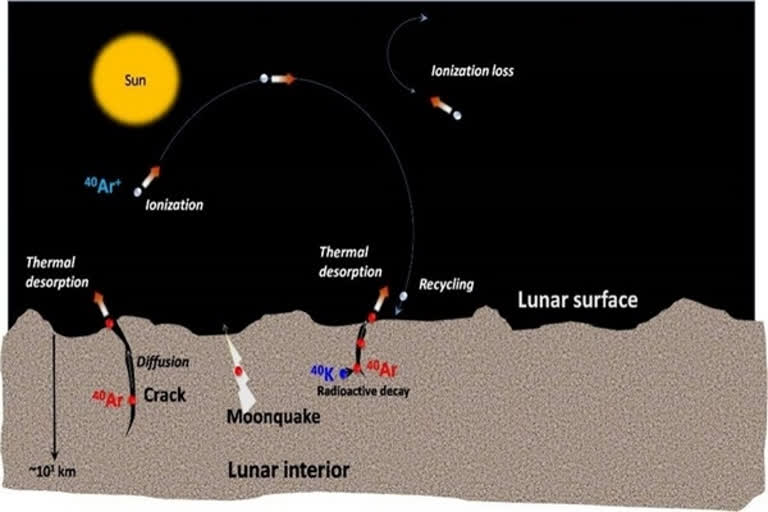Bengaluru: The Chandrayaan-2 orbiter has detected Argon-40 on lunar exosphere from an altitude of approximately 100 kilometres, informed Indian Space Research Organisation (ISRO) on Thursday.
"The CHACE-2 payload aboard the Chandrayaan-2 orbiter has detected Argon-40 from an altitude of approximately 100 kilometres," tweeted ISRO.
-
#ISRO
— ISRO (@isro) October 31, 2019 " class="align-text-top noRightClick twitterSection" data="
The CHACE-2 payload aboard the #Chandrayaan2 orbiter has detected Argon-40 from an altitude of approximately 100 km.
For more details please see https://t.co/oY9rPZ9o1w
Here's the schematic of the origin and dynamics of Argon-40 in lunar exosphere pic.twitter.com/xrFDblq2Mt
">#ISRO
— ISRO (@isro) October 31, 2019
The CHACE-2 payload aboard the #Chandrayaan2 orbiter has detected Argon-40 from an altitude of approximately 100 km.
For more details please see https://t.co/oY9rPZ9o1w
Here's the schematic of the origin and dynamics of Argon-40 in lunar exosphere pic.twitter.com/xrFDblq2Mt#ISRO
— ISRO (@isro) October 31, 2019
The CHACE-2 payload aboard the #Chandrayaan2 orbiter has detected Argon-40 from an altitude of approximately 100 km.
For more details please see https://t.co/oY9rPZ9o1w
Here's the schematic of the origin and dynamics of Argon-40 in lunar exosphere pic.twitter.com/xrFDblq2Mt
Earlier this month, the ISRO had released images of the moon's surface clicked by Orbiter High-Resolution Camera (OHRC) onboard Chandrayaan-2.
The space agency had lost communication from its Lander Vikram which was supposed to soft-land on the far side of the moon on September 7.
The Lander successfully separated from Chandrayaan-2 Orbiter on September 2. After revolving the Earth's orbit for nearly 23 days, the craft began its journey to the moon on August 14.
The mission took off from the Satish Dhawan Space Centre in Sriharikota on July 22.



